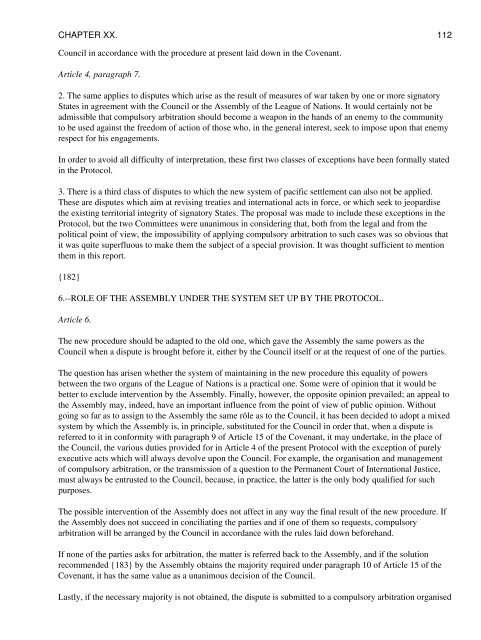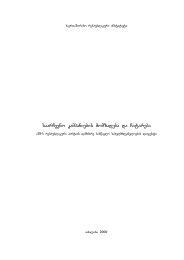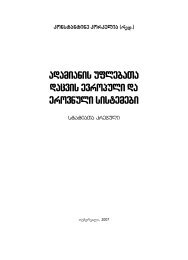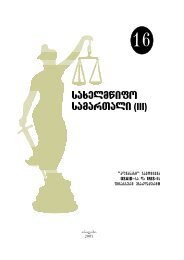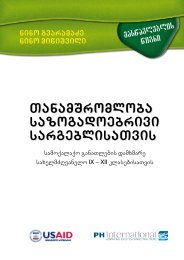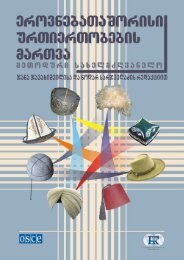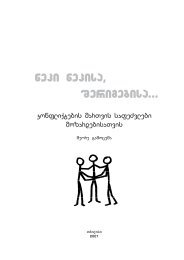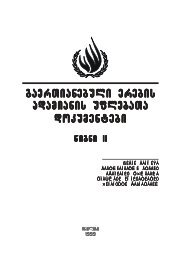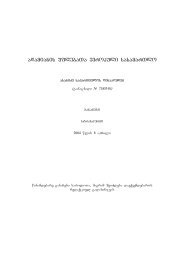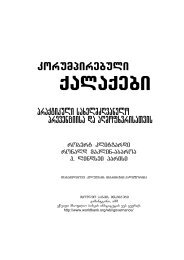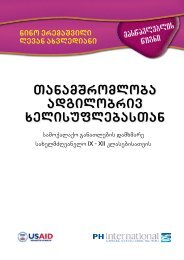The Geneva Protocol, by David Hunter Miller
The Geneva Protocol, by David Hunter Miller
The Geneva Protocol, by David Hunter Miller
Create successful ePaper yourself
Turn your PDF publications into a flip-book with our unique Google optimized e-Paper software.
CHAPTER XX. 112<br />
Council in accordance with the procedure at present laid down in the Covenant.<br />
Article 4, paragraph 7.<br />
2. <strong>The</strong> same applies to disputes which arise as the result of measures of war taken <strong>by</strong> one or more signatory<br />
States in agreement with the Council or the Assembly of the League of Nations. It would certainly not be<br />
admissible that compulsory arbitration should become a weapon in the hands of an enemy to the community<br />
to be used against the freedom of action of those who, in the general interest, seek to impose upon that enemy<br />
respect for his engagements.<br />
In order to avoid all difficulty of interpretation, these first two classes of exceptions have been formally stated<br />
in the <strong>Protocol</strong>.<br />
3. <strong>The</strong>re is a third class of disputes to which the new system of pacific settlement can also not be applied.<br />
<strong>The</strong>se are disputes which aim at revising treaties and international acts in force, or which seek to jeopardise<br />
the existing territorial integrity of signatory States. <strong>The</strong> proposal was made to include these exceptions in the<br />
<strong>Protocol</strong>, but the two Committees were unanimous in considering that, both from the legal and from the<br />
political point of view, the impossibility of applying compulsory arbitration to such cases was so obvious that<br />
it was quite superfluous to make them the subject of a special provision. It was thought sufficient to mention<br />
them in this report.<br />
{182}<br />
6.--ROLE OF THE ASSEMBLY UNDER THE SYSTEM SET UP BY THE PROTOCOL.<br />
Article 6.<br />
<strong>The</strong> new procedure should be adapted to the old one, which gave the Assembly the same powers as the<br />
Council when a dispute is brought before it, either <strong>by</strong> the Council itself or at the request of one of the parties.<br />
<strong>The</strong> question has arisen whether the system of maintaining in the new procedure this equality of powers<br />
between the two organs of the League of Nations is a practical one. Some were of opinion that it would be<br />
better to exclude intervention <strong>by</strong> the Assembly. Finally, however, the opposite opinion prevailed; an appeal to<br />
the Assembly may, indeed, have an important influence from the point of view of public opinion. Without<br />
going so far as to assign to the Assembly the same rôle as to the Council, it has been decided to adopt a mixed<br />
system <strong>by</strong> which the Assembly is, in principle, substituted for the Council in order that, when a dispute is<br />
referred to it in conformity with paragraph 9 of Article 15 of the Covenant, it may undertake, in the place of<br />
the Council, the various duties provided for in Article 4 of the present <strong>Protocol</strong> with the exception of purely<br />
executive acts which will always devolve upon the Council. For example, the organisation and management<br />
of compulsory arbitration, or the transmission of a question to the Permanent Court of International Justice,<br />
must always be entrusted to the Council, because, in practice, the latter is the only body qualified for such<br />
purposes.<br />
<strong>The</strong> possible intervention of the Assembly does not affect in any way the final result of the new procedure. If<br />
the Assembly does not succeed in conciliating the parties and if one of them so requests, compulsory<br />
arbitration will be arranged <strong>by</strong> the Council in accordance with the rules laid down beforehand.<br />
If none of the parties asks for arbitration, the matter is referred back to the Assembly, and if the solution<br />
recommended {183} <strong>by</strong> the Assembly obtains the majority required under paragraph 10 of Article 15 of the<br />
Covenant, it has the same value as a unanimous decision of the Council.<br />
Lastly, if the necessary majority is not obtained, the dispute is submitted to a compulsory arbitration organised


